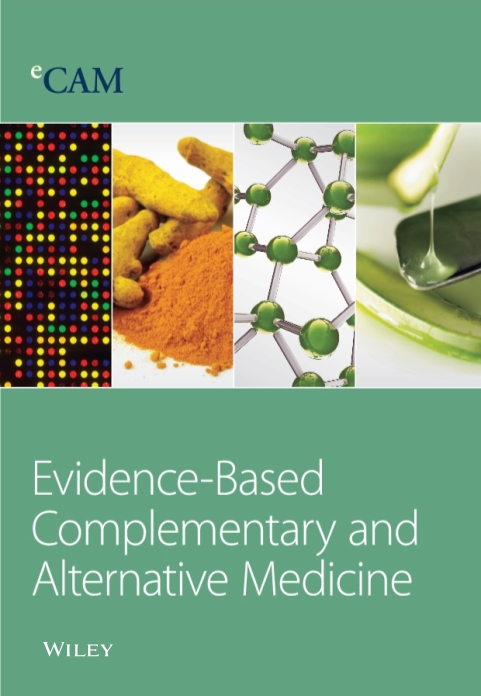Evaluation of the Protoscolicidal Activity of Humulus lupulus Methanolic Extracts on Echinococcus granulosus Sensu Stricto
4区 医学
Q2 Medicine
Evidence-based Complementary and Alternative Medicine
Pub Date : 2024-04-04
DOI:10.1155/2024/6251666
引用次数: 0
Abstract
The larval stage of the parasite Echinococcus granulosus sensu lato (s.l) is responsible for cystic echinococcosis (CE), a long-term infection affecting humans and animals worldwide, and constitutes a serious public health concern. If left untreated, CE can cause serious damage to multiple organs, especially the liver and lungs. Regarding the treatment, in the last few years, the use of pharmacological treatment has increased, suggesting that in the future, drug therapy may replace surgery for uncomplicated cysts. However, the only available anthelmintic drug to treat this infection is the albendazole, which has an efficacy that does not exceed 50%. On the basis of the above-mentioned evidence, new and improved alternative treatments are urgently needed. The use of natural products and their active fractions and components holds great promise as a valuable resource for the development of novel and effective therapies. Hop (Humulus lupulus L.) is a bittering agent in the brewing industry for which the sedative, digestive, anti-inflammatory, and antimicrobial effects have been reported. The purpose of this study was to assess the in vitro efficacy of methanolic extracts from the leaves of hop varieties against E. granulosus sensu stricto (s.s) protoscoleces. Varieties Mapuche and Victoria caused a stronger protoscolicidal effect compared to the Bullion, Cascade, and Traful varieties (), coinciding with their highest content of flavonoids, total polyphenols, and saponins. The viability of protoscoleces treated with the varieties Mapuche and Victoria decreased to approximately 50% at days 5 y 8, respectively, showing alterations such as soma contraction and impaired microtriches. After 18 days of treatment with both varieties, protoscoleces were completely altered both structurally and ultrastructurally. In conclusion, the methanolic extracts of the H. lupulus varieties Mapuche and Victoria demonstrated a marked in vitro effect against E. granulosus s.s. protoscoleces. The beer-making industry exclusively uses hop cones, leaving behind large amounts of hop leaves as an agricultural by-product that is not being utilized. On the basis of our study, we propose that hop leaves could also be used as a source of secondary metabolites with anthelmintic activity.评估葎草甲醇提取物对严格棘球蚴的杀原体活性
囊性棘球蚴病(CE)是由普通棘球蚴寄生虫(schinococcus granulosus sensu lato,s.l.)的幼虫阶段引起的,这是一种影响全球人类和动物的长期感染病,是一个严重的公共卫生问题。如果不及时治疗,囊性棘球蚴病会对多个器官造成严重损害,尤其是肝脏和肺部。在治疗方面,过去几年中,药物治疗的使用有所增加,这表明未来药物治疗可能会取代手术治疗无并发症的囊肿。然而,目前治疗这种感染的唯一抗蠕虫药物是阿苯达唑,其疗效不超过 50%。根据上述证据,我们迫切需要新的、更好的替代治疗方法。利用天然产品及其活性成分和组分作为开发新型有效疗法的宝贵资源,前景十分广阔。据报道,啤酒花(Humulus lupulus L.)是酿造业中的一种苦味剂,具有镇静、助消化、消炎和抗菌作用。本研究的目的是评估从啤酒花品种的叶子中提取的甲醇提取物对严格意义上的原肠球菌(E. granulosus sensu stricto (s.s) protoscoleces)的体外药效。马普切(Mapuche)和维多利亚(Victoria)这两个品种与布利昂(Bullion)、卡斯卡特(Cascade)和特拉福(Traful)这三个品种相比,具有更强的杀原鳞效果,这与它们的黄酮类化合物、总多酚和皂苷含量最高有关。使用马普切和维多利亚这两个品种处理的原小孢子虫,在第 5 天和第 8 天的存活率分别下降到约 50%,出现了体节收缩和微管受损等变化。用这两个品种处理 18 天后,原小球藻的结构和超微结构完全改变。总之,H. lupulus 马普切和维多利亚品种的甲醇提取物在体外对 E. granulosus s.s.原小孢子虫有明显的抑制作用。啤酒酿造业只使用酒花球果,留下的大量酒花叶片作为农副产品没有得到利用。根据我们的研究,我们建议酒花叶也可用作具有驱虫活性的次级代谢产物的来源。
本文章由计算机程序翻译,如有差异,请以英文原文为准。
求助全文
约1分钟内获得全文
求助全文
来源期刊
自引率
0.00%
发文量
1983
审稿时长
2.2 months
期刊介绍:
Evidence-Based Complementary and Alternative Medicine (eCAM) is an international, peer-reviewed journal that seeks to understand the sources and to encourage rigorous research in this new, yet ancient world of complementary and alternative medicine.
The journal seeks to apply scientific rigor to the study of complementary and alternative medicine (CAM) modalities, particularly traditional Asian healing systems. eCAM emphasizes health outcome, while documenting biological mechanisms of action. The journal is devoted to the advancement of science in the field of basic research, clinical studies, methodology or scientific theory in diverse areas of Biomedical Sciences. The journal does not consider articles on homeopathy.

 求助内容:
求助内容: 应助结果提醒方式:
应助结果提醒方式:


